|
|
Ninth emission
(printed by el Banco de México)
The Bank of Mexico send that emission to the circulation the 21 of November of 2006 with reasons of facilitating to the handicapped the identification of the denomination of the pieces and to make difficult to the falsification of banknotes, improving the security characteristics.
As with previous emissions, in order to improve the identification of the denomination by people with visual deficiencies, the banknotes of this ninth emission contain one or more features that allow to identify their denomination. There are two techniques to help visually impaired people identify the banknotes:
The impression of sensible marks to the tact:
The 100, 200 and 500 peso denominations retained the haptic mark for people with visual disabilities that they had in the D1 family, and one of these marks was added to the 1000 peso denomination, which in this case consists of two concentric circles, each one formed by four dashed lines, and a central point.
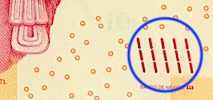 |
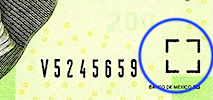 |
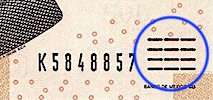 |
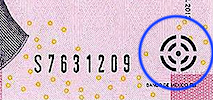 |
The denominations of 20 and 50 pesos have a transparent window where the number of the denomination and parallel diagonal lines are found, with touch-sensitive reliefs.
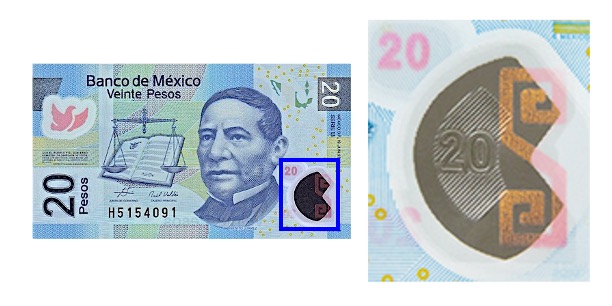 |
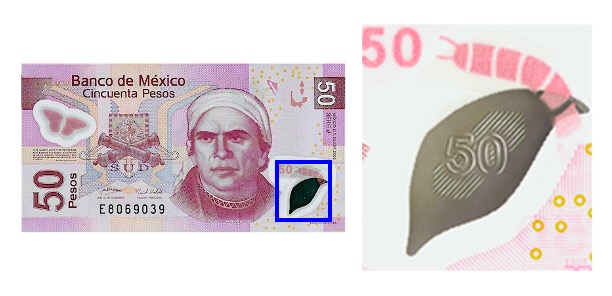 |
The use of different sizes for each denomination.
| Denomination | Material | Length x Width | Reliefs |
| $ 20 | polymer | 120 x 66 mm | 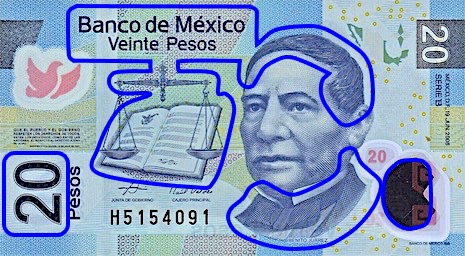 |
| $ 50 | polymer | 127 x 66 mm | 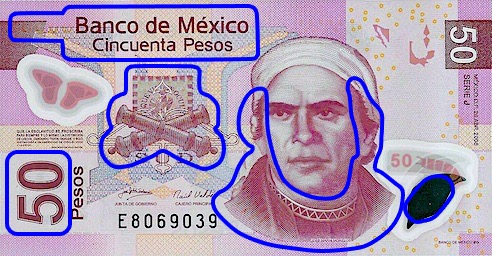 |
| $ 100 | paper | 134 x 66 mm | 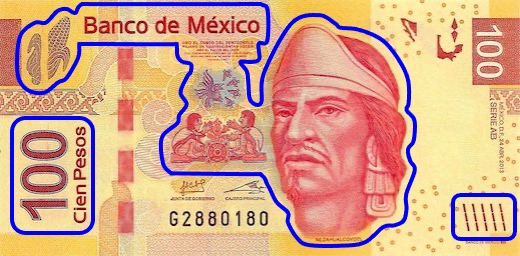 |
| $ 200 | paper | 141 x 66 mm | 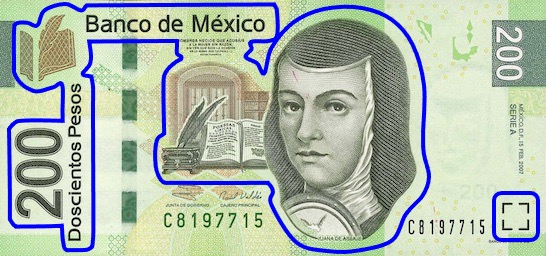 |
| $ 500 | paper | 148 x 66 mm |  |
| $ 1000 | paper | 155 x 66 mm | 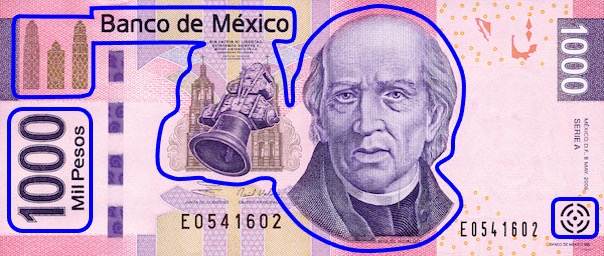 |
The first banknote of this family in circulation was the one of 50 pesos in polymer. The 20 pesos one followed in 2007 in polymer, the 1000 and 200 one in 2008 in paper and the 100 and 500 one in 2010 in paper.
During that emission, the absence of letters "I" notices and "O" in the series and subseries not to confuse them with numbers 1 and 0.
The Bank of Mexico classify this emission in the family F.
The 50 and1000 pesos banknotes of this ninth emission are in the process of being withdrawn. They still retain their liberating power, that is, they are worth what the bill indicates, but by resolution of the Bank of Mexico they are withdrawn from the monetary circulation through the banks. This means that they can continue to be used for commercial and exchange transactions, but when they reach the banks, they must be separated so that they are not released to the public again.
Commemorative:
As the centenary of the Mexican Revolution and the bicentennial of Independence nears, the Bank of Mexico began to put into circulation a new type of "Commemorative" banknotes:
100 pesos printed in polymer, in horizontal format, commemorating the Centenary of the beginning of the Mexican Revolution.
200 pesos printed in paper, in vertical format, commemorating the Bicentennial of the Independence of Mexico.
| Denomination | Material | Length x Width | Reliefs |
| $100 | polymer | 134 x 66 mm | 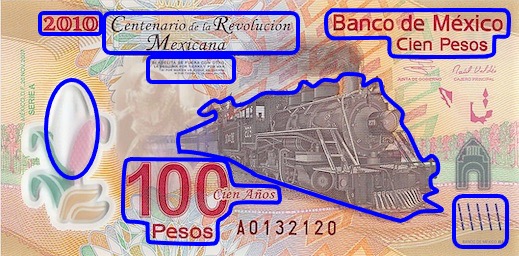 |
| $200 | paper | 141 x 66 mm | 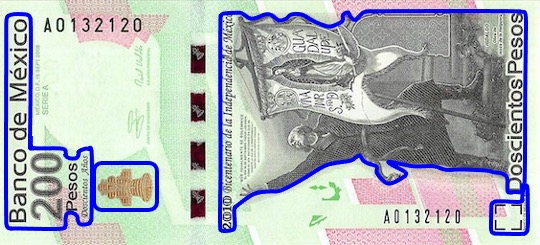 |
Like the banknotes of this ninth emission, the commemorative banknotes also present the haptic mark for people with visual disabilities consisting of five discontinuous and parallel lines, inclined slightly to the left, for the denomination of 100 pesos and a square shape outlined in its four corners for the denomination of 200 pesos.
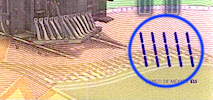 |
 |
These commemorative notes have legal tender, but people who are interested can keep them in memory of those events. Note that these commemorative notes will not replace those currently in circulation, but coexist with them, and the Central Bank will withdraw once they have completed their useful life.
The Bank of Mexico also classify these banknotes in the family F.